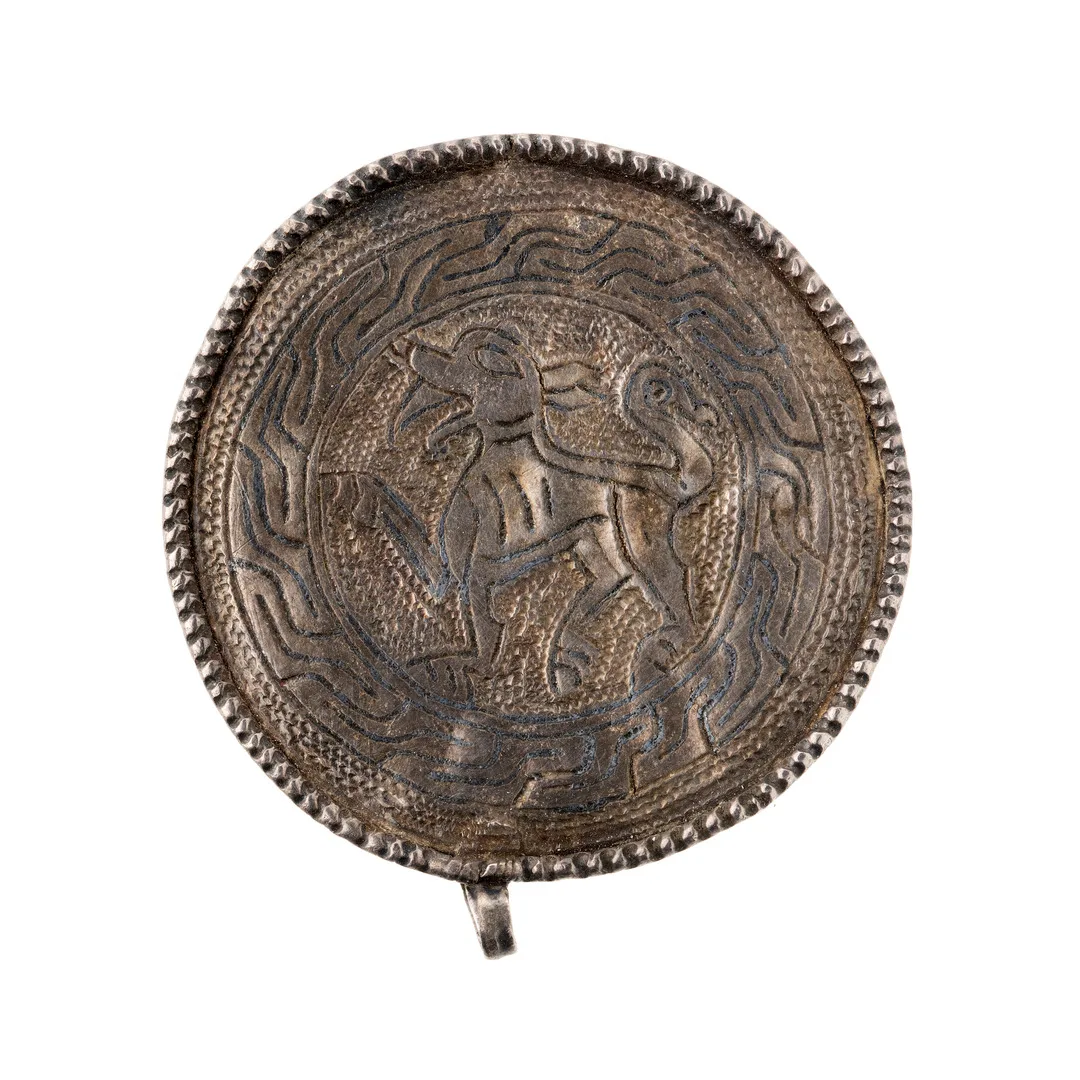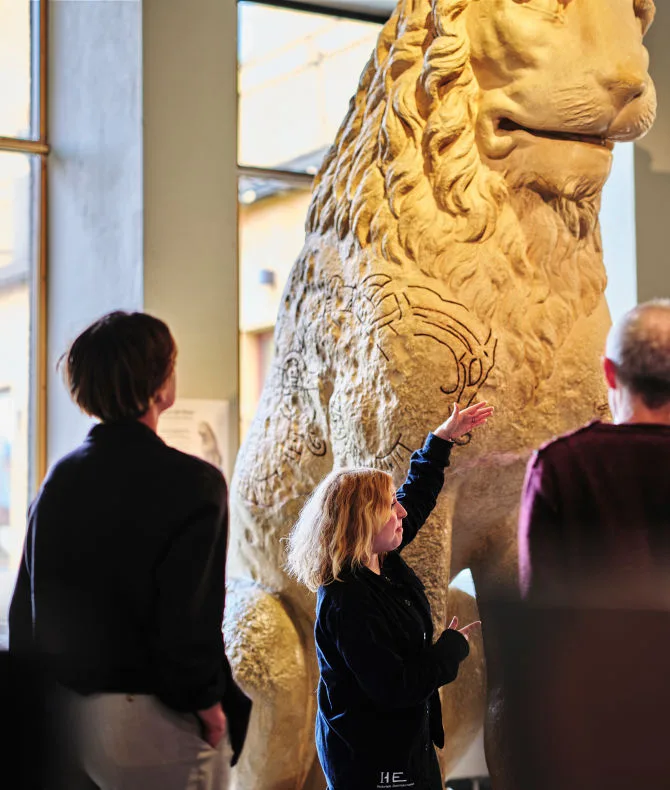An unusual medieval pendant
Viking Age
AD 800 – AD 1100
Middle Ages
AD 1050 – AD 1520
Modern Age
AD 1520 – AD 2025
The ornament measures 4.4 centimetres in diameter and consists of a silver disc with decoration on the front, while the reverse is plain. The disc is edged with a silver wire and fitted with a loop. The front features an animal figure, interpreted as a lion, framed by a circle with a meander pattern, a classical antique motif. To highlight the design, the contours are filled with a black substance using the niello technique.
This ornament belongs to a small group of disc-shaped pieces from the early medieval period. Some of these bear traces of pin fittings on the reverse, suggesting they originally served as brooches. In certain cases, they have been found in pairs, possibly linked together by a chain.
Through depictions and grave finds, archaeologists know that during the Viking Age and the Middle Ages, cloaks or mantles were fastened with brooches joined by a chain. This also explains the placement of the loop in relation to the motif, which is often positioned such that the figure would appear upside down if worn as a pendant.

Silver pendant
Found at Gillsättra, Öland.
A rare find
Only three other medieval silver discs featuring a four-legged animal motif are known from Sweden. One comes from Tingby in Småland, one from Espinge in Skåne, and one from Klockhem in Västergötland. Estonia and Finland each have two examples, and Denmark has one with this specific motif.
Some of the Swedish examples were found alongside coins, often minted during the reign of King Knut Eriksson (1167–1195), indicating that the ornaments must have been made during or before this period. This theory is further supported by the stylistic resemblance of the animal to the large four-legged creature, interpreted as a lion, that became popular in Nordic art during the 11th century.
Had they ever seen a lion?
A good example of this artistic kinship is the animal figure found on the base plate of one of the silver bowls in the great silver hoard from Old Uppsala. These bowls are believed to have been made in the late 11th or early 12th century.
Why depict a lion, a creature few in the Nordic countries would have seen alive? The answer lies in the importance for Christians in the North to demonstrate their faith. In Christian iconography, the lion symbolises the struggle between good and evil, and the motif appears frequently in contemporary European art.

Silver bowl
A silver bowl with loin motif found in Uppsala.
On view at Historiska museet in the exhibition Guldrummet
Ecclesiastical connections
The placement of the loop beneath the animal figure on the Gillsättra ornament suggests it was once fitted with a pin and formed part of a brooch pair. The choice of motif, along with the use of silver, indicates it was worn by someone of high social status, possibly with ecclesiastical ties. The fact that such ornaments are sometimes found in hoards suggests that by the 13th century, they had lost their original function and were valued solely for their metal content.






